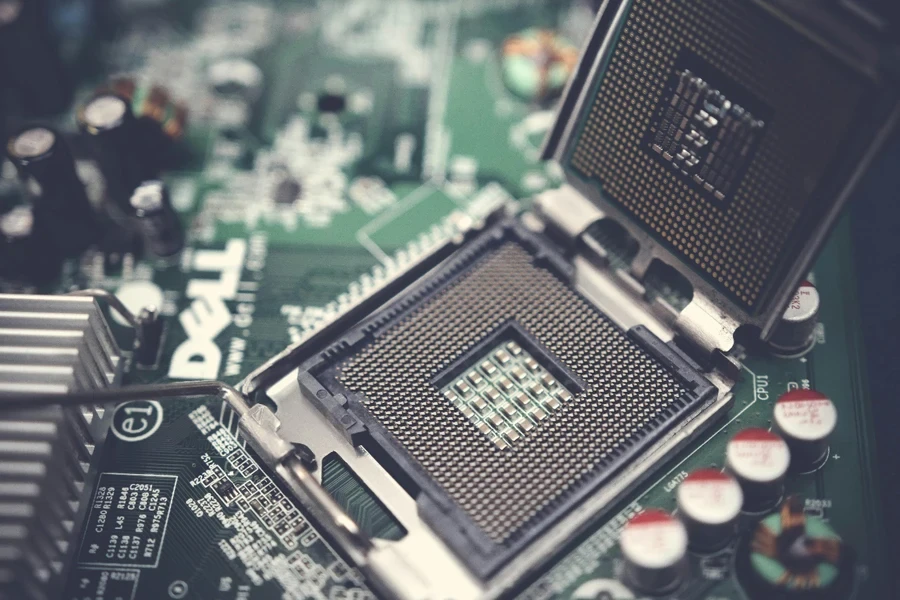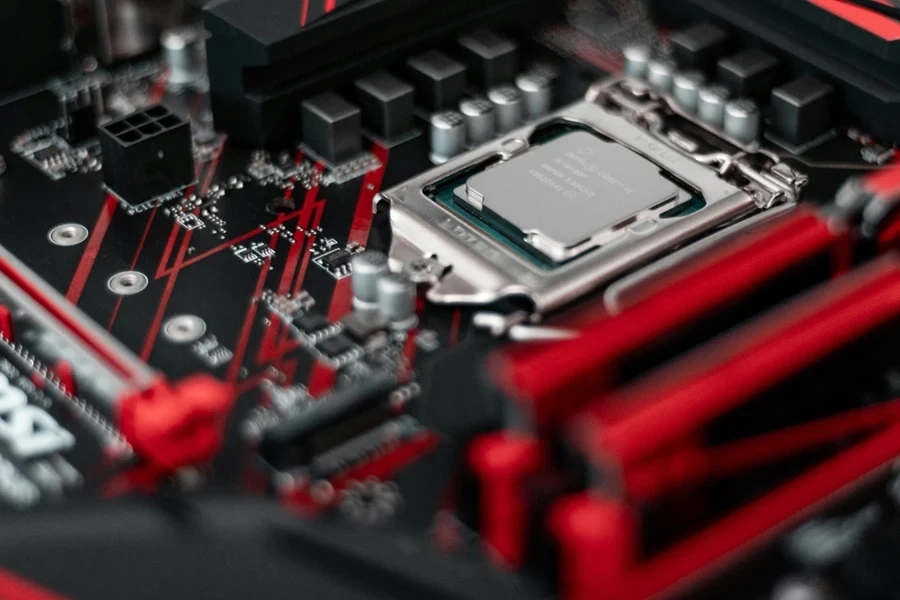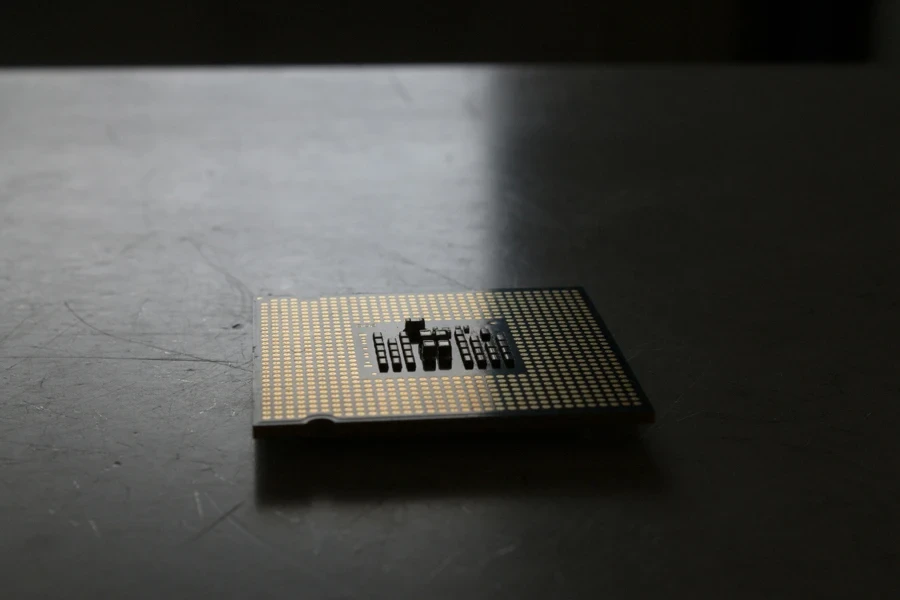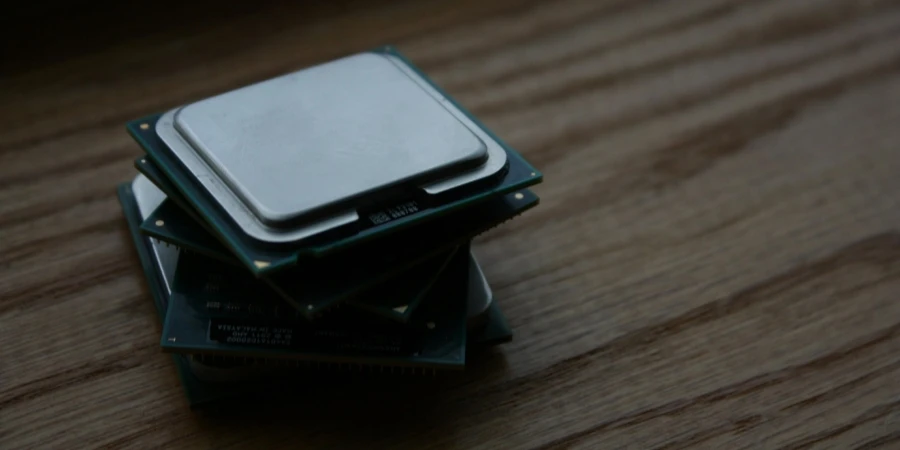In 2024, CPUs are at the forefront of technological innovation, powering advancements across diverse sectors, from consumer electronics to artificial intelligence. As processors become more complex and efficient, keeping pace with the latest design and technology trends is crucial for professional buyers. This article explores the groundbreaking innovations in CPU manufacturing, from the integration of new materials to the adoption of revolutionary design techniques. Understanding these developments will help decision-makers identify the most impactful products and make informed investments.
Table of Contents
● Market overview: The booming CPU industry in 2024
● Key technology and design innovations shaping the future
● Top-selling models driving market trends
● Conclusion
Market overview: The booming CPU industry in 2024

Market growth and scale
The global CPU market is experiencing robust growth, driven by rising demand across sectors like consumer electronics, data centers, and high-performance computing. The market was valued at $59 billion in 2023 and is expected to reach $106 billion by 2030, reflecting a compound annual growth rate (CAGR) of 10.5% according to Verified Market Reports. This growth is fueled by continuous advancements in CPU technologies, increased adoption of AI and machine learning applications, and the expansion of data-intensive industries.
Key players and market shares
Key players dominating the CPU market include Intel, AMD, and NVIDIA, each holding significant market shares through their advanced product offerings and technological innovations. Intel continues to lead with its strong presence in both consumer and enterprise markets, while AMD is gaining ground with its high-performance Ryzen and EPYC processors. NVIDIA, traditionally known for GPUs, is also making strategic moves into the CPU market, particularly in AI and data center segments. These companies are engaged in intense competition, constantly pushing the envelope with new processor architectures and manufacturing processes, ensuring they maintain a competitive edge in a rapidly evolving industry.
Market changes and trends
The CPU market is undergoing significant changes, influenced by shifting consumer demands, technological breakthroughs, and evolving application requirements. There’s a growing emphasis on energy efficiency and sustainability, driving innovations in power-efficient CPU designs. Additionally, the market is seeing a trend towards heterogeneous computing architectures, where CPUs are increasingly integrated with specialized accelerators like GPUs and NPUs to handle specific tasks more efficiently. This shift is particularly evident in sectors like AI, where specialized processing units are essential for managing complex workloads. These trends highlight the dynamic nature of the CPU market, where staying ahead of technological advancements is crucial for maintaining market relevance.
Key technology and design innovations shaping the future

Beyond silicon: The materials revolution
As the limits of silicon-based technology approach, the CPU industry is exploring alternative materials that offer superior performance and efficiency. Graphene and molybdenum disulfide are emerging as promising candidates, providing enhanced electrical conductivity and operating effectively at much smaller scales than traditional silicon. Graphene boasts exceptional electron mobility, which could lead to CPUs that are not only faster but also significantly more energy-efficient. Molybdenum disulfide, with its excellent semiconductor properties, enables the production of ultra-thin transistors, allowing for greater miniaturization of components without sacrificing performance. These materials are pivotal in the ongoing quest to overcome the physical limitations of silicon, pushing the boundaries of what is possible in CPU design, according to Logics Technology.
3D stacking: More power in smaller packages
3D stacking technology represents a significant leap forward in CPU design, enabling the creation of more powerful processors within a smaller physical footprint. Traditional CPUs are built in a flat, two-dimensional plane, which limits how much processing power can be packed onto a single chip. 3D stacking involves layering components vertically, significantly increasing chip density and performance while reducing power consumption and size. This technology is particularly beneficial for mobile devices and laptops, where space is at a premium. By stacking multiple layers of transistors, manufacturers can create CPUs with vastly improved computational capabilities, making this innovation a game-changer for both consumer electronics and high-performance computing applications, as highlighted by Logics Technology.
EUV lithography: Precision in production

Extreme Ultraviolet Lithography (EUV) is revolutionizing CPU manufacturing by enabling the production of chips with finer, more precise patterns. This technology allows for the creation of CPUs with billions more transistors than previously possible, significantly boosting their computational power and efficiency. EUV technology has paved the way for chips that are not only smaller but also more powerful, addressing the growing demand for high-performance computing and AI applications. By achieving a higher transistor density, EUV lithography is critical in maintaining the momentum of Moore’s Law, ensuring that CPU performance continues to scale in line with technological advancements.
Quantum leap: The rise of quantum computing
While not a direct competitor to traditional CPUs, quantum computing is rapidly advancing and holds the potential to revolutionize the field of computing altogether. Quantum processors operate on the principles of quantum mechanics, allowing them to solve problems that are intractable for classical CPUs. Recent breakthroughs in qubit stability and scalability are making quantum computing more accessible and applicable to a broader range of technologies. These advancements could drastically change how complex computations, such as cryptographic analysis and large-scale simulations, are performed. As quantum technology matures, it will increasingly complement traditional CPUs, particularly in specialized fields requiring immense computational power.
Top-selling models driving market trends

Intel Core i9-14900K: Unmatched performance
The Intel Core i9-14900K leads the market in 2024, renowned for its 24 cores and 32 threads, making it one of the most powerful CPUs available. With a boost clock speed of up to 6.0GHz, this processor is ideal for high-end gaming and demanding computational tasks. Its advanced architecture supports DDR5 and PCIe 5.0, ensuring compatibility with the latest technologies. This model is particularly favored in the gaming community and by professionals requiring top-tier performance for tasks like video editing and 3D rendering.
AMD Ryzen 9 7950X: Multi-core powerhouse
The AMD Ryzen 9 7950X is another top-selling model, particularly popular among users who need robust multi-threading capabilities. Featuring 16 cores and 32 threads, this CPU excels in parallel processing, making it an excellent choice for content creators and software developers. Its base clock of 4.5GHz and boost clock up to 5.7GHz provide exceptional speed, while its AM5 platform ensures future compatibility with upcoming technologies. The Ryzen 9 7950X is also known for its efficiency, delivering high performance with relatively low power consumption.
AMD Ryzen 7 7800X3D: Gaming-centric innovation
For gamers, the AMD Ryzen 7 7800X3D stands out as a best-seller, thanks to its 3D V-Cache technology. This innovation significantly enhances cache memory, improving gaming performance by reducing latency and increasing frame rates. With 8 cores and 16 threads and a boost clock of up to 5.0GHz, the Ryzen 7 7800X3D delivers outstanding performance in gaming and other latency-sensitive applications, making it a go-to choice for gamers who demand the best.
Intel Core i7-14700K: Mid-range marvel
The Intel Core i7-14700K is a popular mid-range option that offers 20 cores and 28 threads, delivering near-flagship performance at a more affordable price. It is particularly well-suited for users who need a high-performance CPU without the premium cost of an i9. With a boost clock of 5.5GHz and support for Wi-Fi 7 and Thunderbolt 5, this processor is versatile enough to handle both gaming and productivity tasks efficiently. Its balance of price and performance makes it a best-seller among gamers and content creators alike.
AMD Ryzen 5 7600X: Value-packed performance
Rounding out the list of best-sellers is the AMD Ryzen 5 7600X, which is highly regarded for its value. This CPU offers 6 cores and 12 threads, with a base clock of 4.7GHz and a boost clock of up to 5.3GHz. It supports DDR5 and PCIe 5.0, making it future-proof while maintaining a lower price point. The Ryzen 5 7600X is an excellent choice for users looking for strong performance without the high cost, making it particularly popular among budget-conscious gamers and professionals.
Conclusion

The CPU market in 2024 is characterized by rapid growth, technological innovation, and the dominance of high-performance models from industry leaders like Intel and AMD. As processors continue to evolve, incorporating new materials, advanced design techniques, and energy-efficient technologies, they are driving significant changes across various sectors. Looking ahead, the ongoing advancements in CPU design and manufacturing are expected to further enhance computing capabilities, ensuring that the industry remains dynamic and competitive in the years to come.




